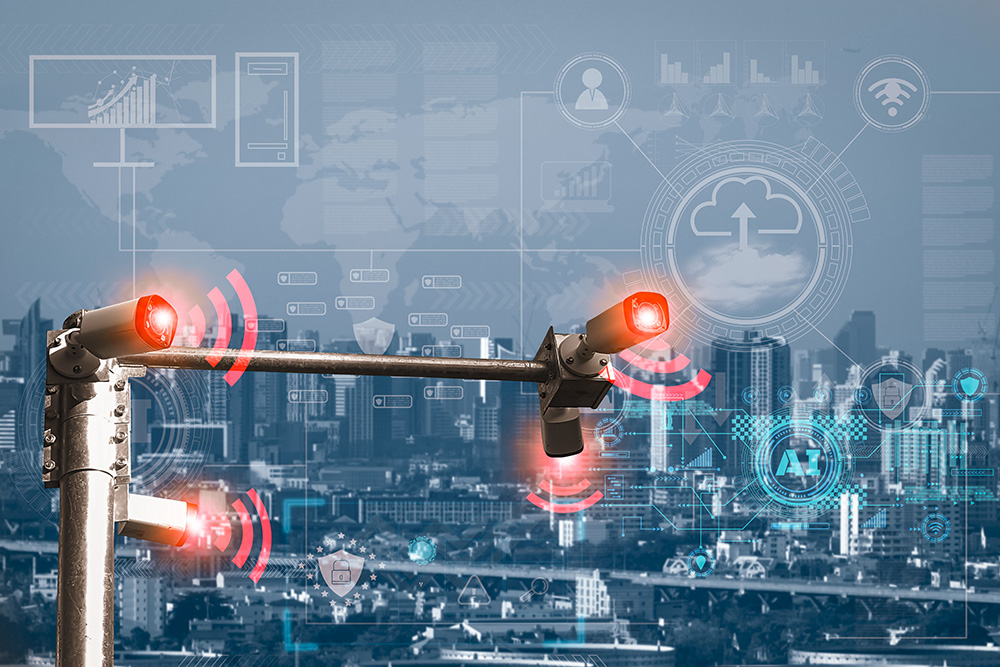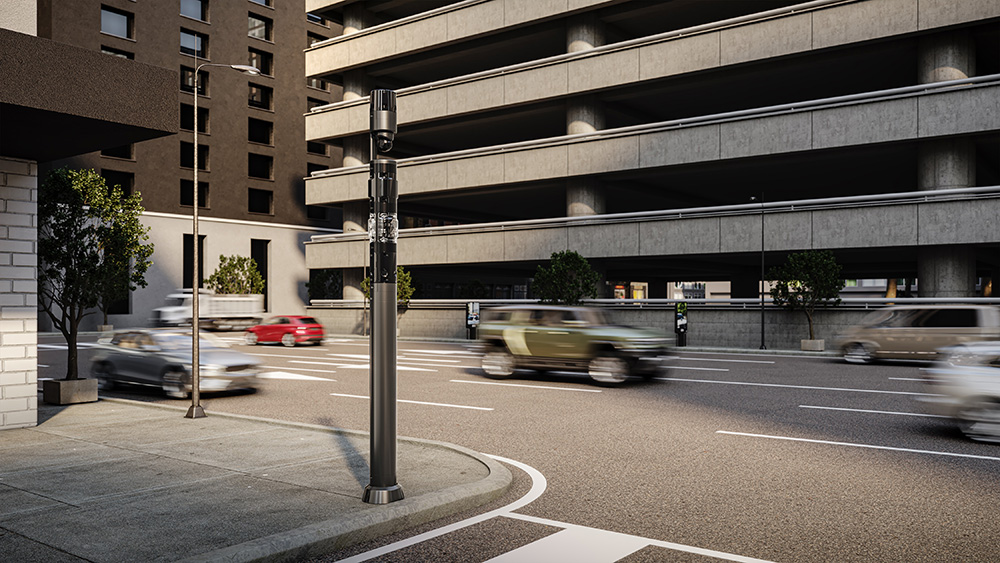
How significant is artificial intelligence currently in the camera industry when it comes to road traffic management and enforcement?
Akif Ekin, founder of Ekin:
“It's critical. I cannot imagine meeting the demands of road traffic management and enforcement without artificial intelligence. AI is used with other algorithms to power the camera's intelligence and can accurately predict and regulate the flow of people, objects, and vehicles, at various points in the transport system. In order to combat speeding or phone use, many cities are currently implementing fine automation supported by video analytics. AI can reduce accidents by optimising traffic flows and improving road safety transforming tasks like car counting and speed detection into powerful data for traffic management by monitoring situations in real time. This knowledge provides an exciting world of possibilities for data-driven management planning aimed at reducing traffic congestion and improving overall road safety, which is essential for a healthy living environment.”
Jayden Xu, senior ITS solution manager at Hikvision:
“Smart mobility has been a key theme in the transportation industry for a while. The idea is to keep traffic flowing and help people to get where they need to be, in a smarter way. To this end, industry players are now innovating and introducing advanced intelligent video systems for improved traffic management, making the roads safer and more efficient for every user. Relying on intelligent video analytics, traffic video cameras identify traffic build-ups at intersections by counting numbers of vehicles crossing an intersection and detecting their speed, while also counting the number of vehicles queueing in real-time. Aggregated data informs the system when to switch traffic lights to red or green. Intelligent optimisation for traffic signals ensures more effective traffic flow. Traffic incidents can be disastrous, not merely for causing congestion on the roads but sometimes far worse – resulting in injuries and even fatalities. These incidents have many causes, not the least of which is drivers wilfully violating traffic regulations or laws. Video technology can aid in detecting different kinds of events – for example, illegal parking, running a red light, wrong-way driving, speeding, and making illegal U-turns can all be detected by smart camera technology. By using deep learning technology, cameras can help recognise these events and traffic authorities can be immediately notified and take necessary actions even before traffic incidents occur. Scenarios include stopping a driver who is occupying an emergency lane, or notifying a driver who parked their car illegally. Furthermore, ticketing systems can be incorporated to further regulate driving behaviours. Intelligent communication about warnings and updates helps everyone save time, avoid frustration, and simplify everyday mobility. This can be done via traffic guidance screens displayed at highly visible locations, such as congested areas, transportation hubs, shopping malls and city plazas. Traffic video cameras generate real-time data of traffic flow and incidents, sending it to a central platform to further fuse with data from third-party systems such as radar and GPS systems. They also disseminate traffic information, including traffic status, warning and advisory notices, as well as parking status.”

Alex Filippini, chief technical officer, Tattile:
“New road contexts are increasingly complex and challenging, with an increasing number of actors and progressively more precise and articulated traffic management applications. For this reason, the use of traditional algorithms does not allow to meet the markets’ needs. The introduction of artificial intelligence in the smart camera industry plays a key role, allowing us to achieve performance close to perfection, always maintaining a high level of resilience to the different installation contexts and environmental conditions. With the introduction of AI technology, cameras have become more intelligent, managing to adapt to new and complex scenarios.”
Ganesh Narayanaswamy, product line & business management at Onsemi:
“The jury is broadly out there on what intelligence within the data gathering device - i.e., the image sensor of the camera - would be pertinent to any given application, let alone road traffic management or enforcement. In my opinion, this will prevail for a considerable time before the industry starts to view the data input sensor to be just another block of a processing element. Today we are still not there to see this absorption. Hence, while there have been some breakthrough efforts in the industry to embed AI in image sensors, it appears more as a solution looking for a problem to solve. With the advent of 5G and connectivity therein, with time, this could change as more and more decision capabilities get driven to the sliver of edges than just the edge. AI can always be used in any decision making process and road traffic management/enforcement is no stranger to this. As we move along with electric vehicles and 5G, you can envision a compelling need to remove inefficiencies right down to the last ones. Every commute vehicle carrying an image sensor can become a source of input of paramount importance in the very system that vehicle is engaging in right at that moment.”
Dany Longval, VP of sales - NA, Teledyne & Manny Romero, senior product manager, Teledyne Dalsa:
“Broadly speaking, AI has enabled new and innovative solutions in the ITS industry. We have worked in this sector for decades and have seen traditional logic-based systems perform relatively well for applications like tolling and speed enforcement. However, the level of accuracy drops significantly when similar approaches are applied in highly variable use cases like congestion pricing, rendering them almost unusable. We started exploring better ways to detect vehicles and extract licence plates in such scenarios, which has led us to investigate the use of AI. While sourcing accurate datasets and training neural networks is no easy task, we were convinced by the results we achieved with AI versus traditional machine vision techniques to continue on this path. AI has enabled these applications in a way that was unimaginable just a few years ago.”
Where do you see AI going next in cameras for road traffic management and enforcement?
Alex Filippini, chief technical officer, Tattile:
“Artificial Intelligence algorithms are undergoing continuous and fast evolution, and their adoption will allow not only the collection of multiple new information with very high reliability but also the prediction of numerous events, e.g. accidents, queues and traffic flows. This will make roads safer and reduce emissions. Multiple cameras will also be able to cooperate to create a network of distributed intelligence capable of analysing the enormous volume of collected data and providing new classes of information.”
Akif Ekin, founder of Ekin:
“It will be an integral part of any camera. The question will not be whether or not AI is used, but how many layers and consecutive operations are performed simultaneously. Our solution portfolio includes advanced traffic management technology that continuously performs vehicle counting for traffic density, tailgating, accidents and hard brake detection. AI object recognition can detect dangerous objects on the road, and video analytics can monitor stopped vehicles caused by traffic jams, accidents or breakdowns. AI will also assist in reducing human error by comprehensively managing traffic flow, identifying areas that are likely to be congested, and recommending parking ahead of time through the use of applications. Sensor technology can calculate the safe distance between the car and the object in front of it, lowering the risk of an accident, which is currently available in our solutions. With the arrival of self-driving cars, they will heavily rely on the implementation of AI traffic management systems as part of their daily infrastructure. One key element of our modular smart pole, the Ekin Spotter is the cost-effectiveness of expanding the modular solutions to meet the ever-growing requirements of a city without investing in new infrastructure.”

Ganesh Narayanaswamy, product line & business management at Onsemi:
“I don’t see these making a ‘turn-the-page’ kind of change; more so it would be like ‘write another line’ in the page. If Waze was any example – they pioneered in the area of efficient driving (even though they created bigger problems that they did not account for) – they were dependent on user inputs. Image sensors and cameras can just be that but better – pre-process through AI instead of feeding raw data. How much will be a question of multiple factors including accuracy, precision, costs, ability by the next guy in the data path chain to use the input, etc. It is bound to happen. Only how patiently it is cultivated will define its success.”
Dany Longval, VP of sales - NA, Teledyne & Manny Romero, senior product manager, Teledyne Dalsa:
“Despite all the excitement, AI is still in its infancy. As technology evolves, costs decrease and more SoCs integrate AI capability, we expect to see rising demand for AI-based cameras to execute processing on the edge. The combination of these trends will lead to cameras with increased built-in capabilities. As an example, our Ls245R camera is designed as an embedded imaging solution with integrated self-triggering vehicle detection and automated licence plate recognition. In our view, one of the next frontiers for in-camera technology is self-learning AI algorithms that will ease implementation by simplifying the arduous system training currently associated with AI. We expect this trend to accelerate and will have several solutions for our customers when demand picks up.”
Jayden Xu, senior ITS solution manager at Hikvision:
“We are excited about what’s coming next in terms of AI and traffic management. In spite of our numerous innovations in the field of imaging and video-related technologies, we think the industry is enhancing technology portfolios to deliver even greater visibility of real-time traffic conditions; to reduce roadside infrastructure requirements based on ‘multi-dimensional’ perception and multiple AI features in a single device chassis; and to automate traffic management processes, from vehicle recognition, violation management, parking management, and much more.”





